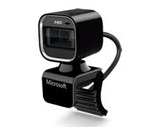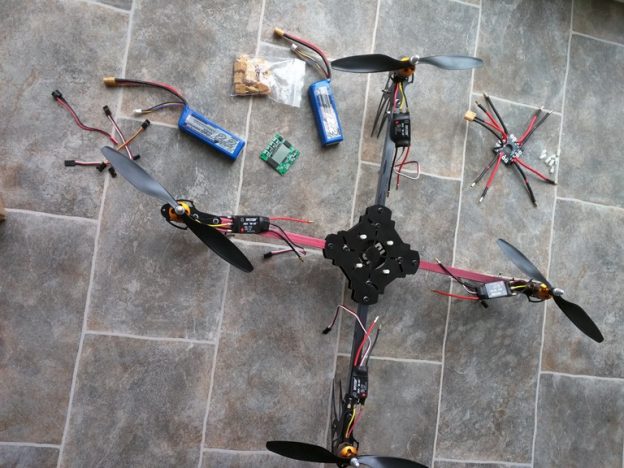The first part of this ‘getting things up and running’ series can be found here.
In this post I wanted to outline what was required to set up Wi-Fi and to get a Microsoft LifeCam 6000 working, providing a web page with the camera image streaming.
So, Wi-Fi… I bought a £6.99 USB Wi-Fi dongle from eBay. After plugging it in and rebooting the Pi I opened a SSH session to it and typed ‘lsusb’ This lists all the usb devices, and I could see the Wi-Fi adapter in the list as a Ralink RT5370.
First thing was to get the drivers – doing an ‘apt-cache search ralink’ found me the correct package (firmware-ralink). On issuing ‘apt-get install firmware-ralink’ it told me that the version I had already up to date – great it seems the Raspbian ‘Wheezy’ image comes with it installed.
So, it was just a case of setting the Wi-Fi options and giving it an IP address (static). I do this directly in the interfaces file. So…
- From the command line run sudo nano /etc/network/interfaces
- Change "iface wlan0 inet dhcp" to "iface wlan0 inet static"
- below this add…
- address 192.168.97.15
- netmask 255.255.255.0
- gateway 192.168.97.1
- also add the following Wi-Fi options
- wpa-ssid YOUR_SSID
- wpa-psk YOU_KEY
- wireless-power off
- Now reboot (sudo reboot)
You should now have a Wi-Fi enabled Pi.
 For the webcam, things were a little trickier… A lot of people are using ‘motion’ for setting up security cameras, as it does motion detection and can spit out images or movies when some motion is detected as well as do time-lapse and provide a web based video stream for viewing in a browser. However, this was overkill for what I had in mind (just simple streaming of the video), and it also uses a lot of horsepower.
For the webcam, things were a little trickier… A lot of people are using ‘motion’ for setting up security cameras, as it does motion detection and can spit out images or movies when some motion is detected as well as do time-lapse and provide a web based video stream for viewing in a browser. However, this was overkill for what I had in mind (just simple streaming of the video), and it also uses a lot of horsepower.
So instead I selected mjpg-streamer, an open source project hosted on SourceForge.
There are no prebuilt binaries for the Pi, so it’s a case of building it yourself – not too difficult…
First get all the dependencies…
- sudo apt-get install libv4l-dev
- sudo apt-get install libjpeg8-dev
- sudo apt-get install imagemagick
I tried installing subversion to check out the code, but the svn urls have moved around and it wouldn’t let me do a checkout as it couldn’t find the correct url, so instead I just downloaded the zipped tarball and extracted it…
- wget http://sourceforge.net/projects/mjpg-streamer/files/latest/download
- mv download mjpg-streamer-r63.tar.gz
- tar –vzxf mjpg-streamer-r63.tar.gz
- cd mjpg-streamer-r63
At this point I tried to do a ‘make’ but it failed stating it could not find linux/videodev.h. A bit of noodling around found that I had a videodev2.h file, so all that was needed was a symbollic link.
- ln –s /usr/include/linux/videodev2.h /usr/include/linux/videodev.h
Now to build it…
- make clean all
I did get a few error towards the end, but the key elements built correctly (I think it was just a plugin or two that failed to build, so I simple glossed over that).
Now you can start the application manually with the following command line:
- ./mjpg_streamer -i "./input_uvc.so" -o "./output_http.so -w ./www"
.. but what we really want is to start it automatically when the Pi boots so…
- sudo /etc/init.d/webcam
… and add the following text to it…
### BEGIN INIT INFO
# Provides: mjpg-streamer
# Required-Start: networking
# Required-Stop:
# Default-Start: 2 3 4 5
# Default-Stop: 0 1 6
# Short-Description: Starts mjpg-streamer
# Description:
### END INIT INFO
#! /bin/sh
# /etc/init.d/webcam
# Start / Stop the webcam streamer
case "$1" in
start)
echo "Starting webcam streaming"
/home/pi/mjpg-streamer-r63/mjpg_streamer -o "/home/pi/mjpg-streamer-r63/output_http.so -w /home/pi/webcam/mjpg-streamer-r63/www" &
;;
stop)
echo "Stopping webcam streaming"
killall mjpg_streamer
;;
*)
echo "Usage: /etc/init.d/webcam {start|stop}"
exit 1
;;
esac
exit 0
Now the final touches of making it executable and making sure it get started…
- sudo chmod 755 /etc/init.d/webcam
- update-rc.d webcam defaults
.. and the final part is of course viewing your handiwork – so open a browser and type :8080">http://<your_pi_ipaddress>:8080 and you should be able to see the webcam image.

